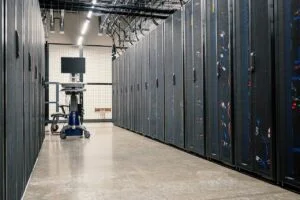The evolution of construction technology has always mirrored humanity’s ambition to build faster, safer, and more efficiently. Among the myriad of innovations shaping the industry, timelapse technology stands out for its unique ability to compress time, offering a bird’s-eye view of projects as they unfold.
From empty plots to towering structures, it is revolutionizing how projects are managed, communicated, and archived. With Buildcam and other reliable cameras, timelapse is weaving the future of construction, one snapshot at a time.
Project Monitoring And Management
The use of timelapse cameras in project monitoring and management extends beyond simple oversight and enables managers to make data-driven decisions.
For example, timelapse footage can be analyzed to track the progress of specific construction phases against the project timeline. This analysis can reveal if certain tasks are taking longer than planned, allowing for real-time adjustments.
Managers can allocate additional resources or adjust schedules accordingly to keep the project on track. Moreover, it can help coordinate the work of different teams, ensuring that there are no conflicts or downtime due to miscommunication or scheduling overlaps.
Quality Control And Accountability
Timelapse technology offers a transparent way to ensure that construction processes meet the required standards.
Each stage of construction is recorded, providing a visual archive that can be reviewed to verify compliance with architectural plans, building codes, and safety regulations.
This archival footage is invaluable not only for project managers but also for quality assurance teams who can conduct detailed post-project analyses to identify areas for improvement.
For subcontractors and workers, knowing that their work is being documented can serve as a motivation to maintain high standards of quality and adherence to safety protocols, thereby enhancing overall accountability on the construction site.
Stakeholder Engagement
Stakeholder engagement through time-lapse videos creates a bridge between the construction site and stakeholders who may not be physically present.
By regularly sharing time-lapse footage, stakeholders can visually track the project’s progress, fostering a sense of involvement and transparency.
This visual reporting mechanism can be particularly beneficial during project milestones or when explaining project delays or challenges. It provides a factual basis for discussions, making it easier to align expectations and maintain trust between the construction company and its clients, investors, or the community.
Marketing And Promotion
Timelapse videos offer compelling storytelling tools that can highlight a company’s technical expertise, efficiency, and ability to tackle complex projects.
A well-produced time-lapse video of a landmark project can capture the imagination of prospective clients and the general public, showcasing the transformation of a site from ground-breaking to the final structure.
These videos can be especially effective on social media platforms, where the visual impact and the ability to convey the scope of a project in a short clip can engage audiences and enhance brand visibility.
Training And Education
Timelapse footage provides a unique opportunity for experiential learning. Trainees and new employees can witness the entire lifecycle of a construction project in a condensed format, which can dramatically enhance their understanding of project management principles, construction techniques, and safety protocols.
This can be particularly valuable for complex projects that incorporate innovative construction methods or for specialized training in areas like crane operation, where understanding the sequence of tasks and coordination requirements is crucial.
Legal And Dispute Resolution
The role of timelapse footage in legal disputes and resolution processes cannot be understated. This visual documentation provides an objective record of the construction progress, site conditions, and compliance with contractual obligations.
In the event of disputes over project delays, work quality, or compliance issues, time-lapse footage can be reviewed to determine the facts, often enabling parties to resolve disputes without resorting to lengthy and costly legal proceedings.
Safety Monitoring
Safety monitoring through continuous timelapse filming can significantly enhance on-site safety practices.
By reviewing timelapse footage, safety officers can identify potentially unsafe practices or conditions that might not be apparent during routine inspections.
This proactive approach allows for the immediate rectification of unsafe conditions, reducing the risk of accidents and ensuring compliance with health and safety regulations.
Efficiency And Innovation
Lastly, the analysis of timelapse footage for identifying inefficiencies and fostering innovation offers a path to continuous improvement in construction processes.
By observing the flow of work and the use of equipment over time, project managers can identify bottlenecks or wasteful practices.
This insight can lead to innovative solutions, such as the adoption of new technologies or the reorganization of work processes, ultimately leading to increased productivity, reduced costs, and minimized environmental impact.
Takeaway
Incorporating timelapse technology into construction projects represents a forward-thinking approach that leverages digital advancements for improved project management, stakeholder engagement, and operational efficiency.
As technology continues to evolve, its applications in construction are likely to expand further, driving efficiency, safety, and sustainability in the industry.









